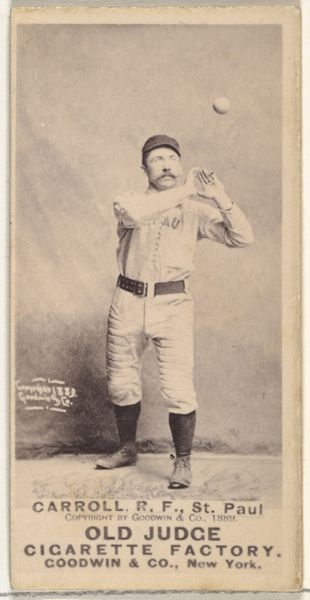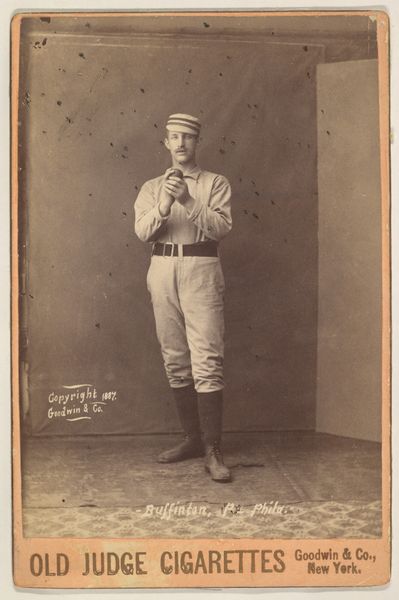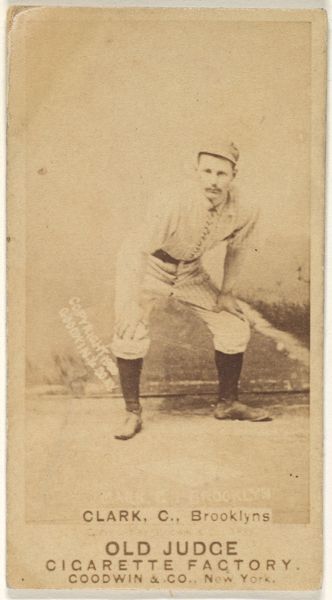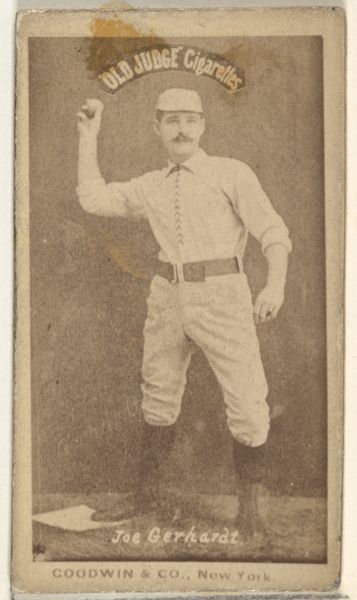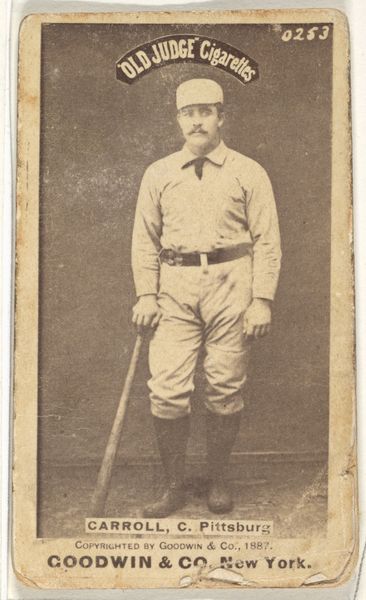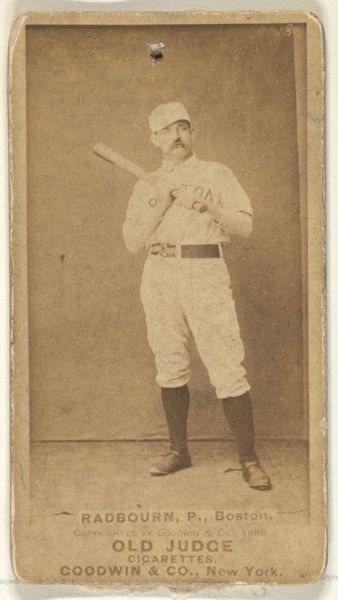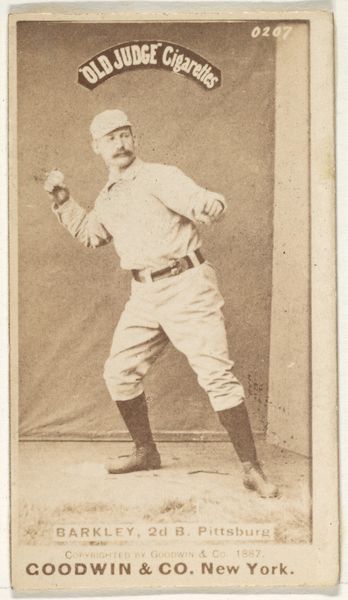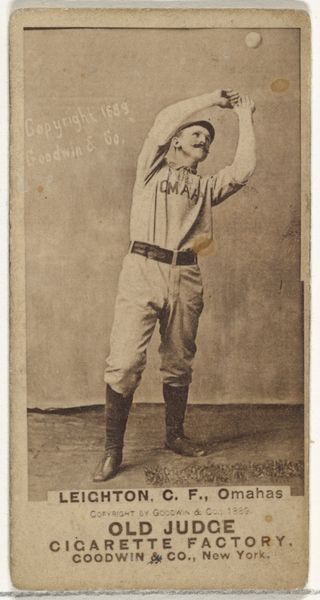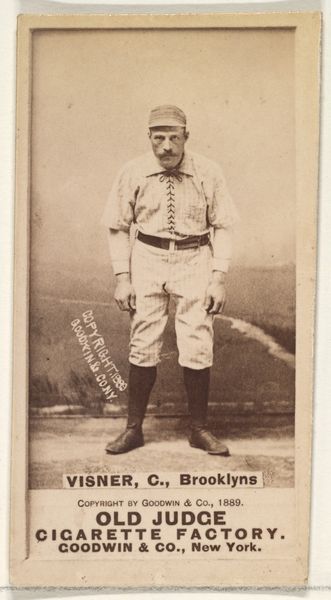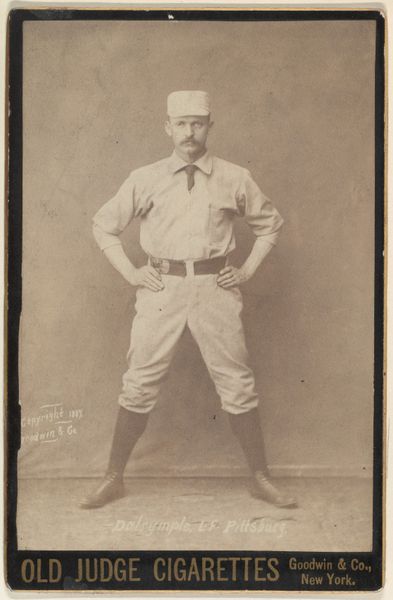
John E. "Scrappy" Carroll, Right Field, St. Paul Apostles, from the Old Judge series (N172) for Old Judge Cigarettes 1889
0:00
0:00
drawing, print, photography
#
portrait
#
drawing
#
pictorialism
# print
#
impressionism
#
baseball
#
photography
#
men
#
pre-raphaelites
#
athlete
Dimensions: sheet: 2 11/16 x 1 3/8 in. (6.9 x 3.5 cm)
Copyright: Public Domain
Editor: Here we have "John E. "Scrappy" Carroll, Right Field, St. Paul Apostles" from 1889. It’s a baseball card, a photograph really, produced for Old Judge Cigarettes. There's something haunting about it, seeing this baseball player advertising cigarettes... How would you approach understanding this photograph? Curator: The immediate thing that strikes me is the blatant commodification. The photograph exists not for art’s sake, nor even purely for sport, but explicitly as advertising tied to a specific product: cigarettes. We have to look at the relationship between baseball's emerging popularity and the growth of the tobacco industry in the late 19th century. This photograph is not just about an athlete; it’s about the manufacturing and marketing of leisure and addiction. What does that mass production of images do to ideas around sport, and to this "Scrappy" Carroll? Editor: That's fascinating. So, it’s not just a portrait of an athlete; it's about industrial strategy. Were these types of cards common at the time? Curator: Absolutely. Consider the labour involved: from the tobacco farms and the cigarette factories to the photographic studios churning out these images, and the printing processes used. Each card represents a node in a vast network of production and consumption. These baseball cards were produced in huge numbers. Editor: So, by understanding how the image was made and circulated, we can learn something about the social values of the time? Curator: Precisely. Think about what it means to collect and trade these cards – creating value through scarcity and demand, while simultaneously normalizing tobacco consumption. Also, the card being sepia-toned, what does this coloration contribute to a sense of 'authenticity' in the making of this artifact? Editor: I never thought about a baseball card having so many layers! I always focused on the athlete, but understanding it in its production context really changes everything. Curator: Seeing art this way makes us challenge those perceived hierarchies that separate "high art" from everyday objects. The story behind a simple baseball card might reveal more than we expected.
Comments
No comments
Be the first to comment and join the conversation on the ultimate creative platform.
